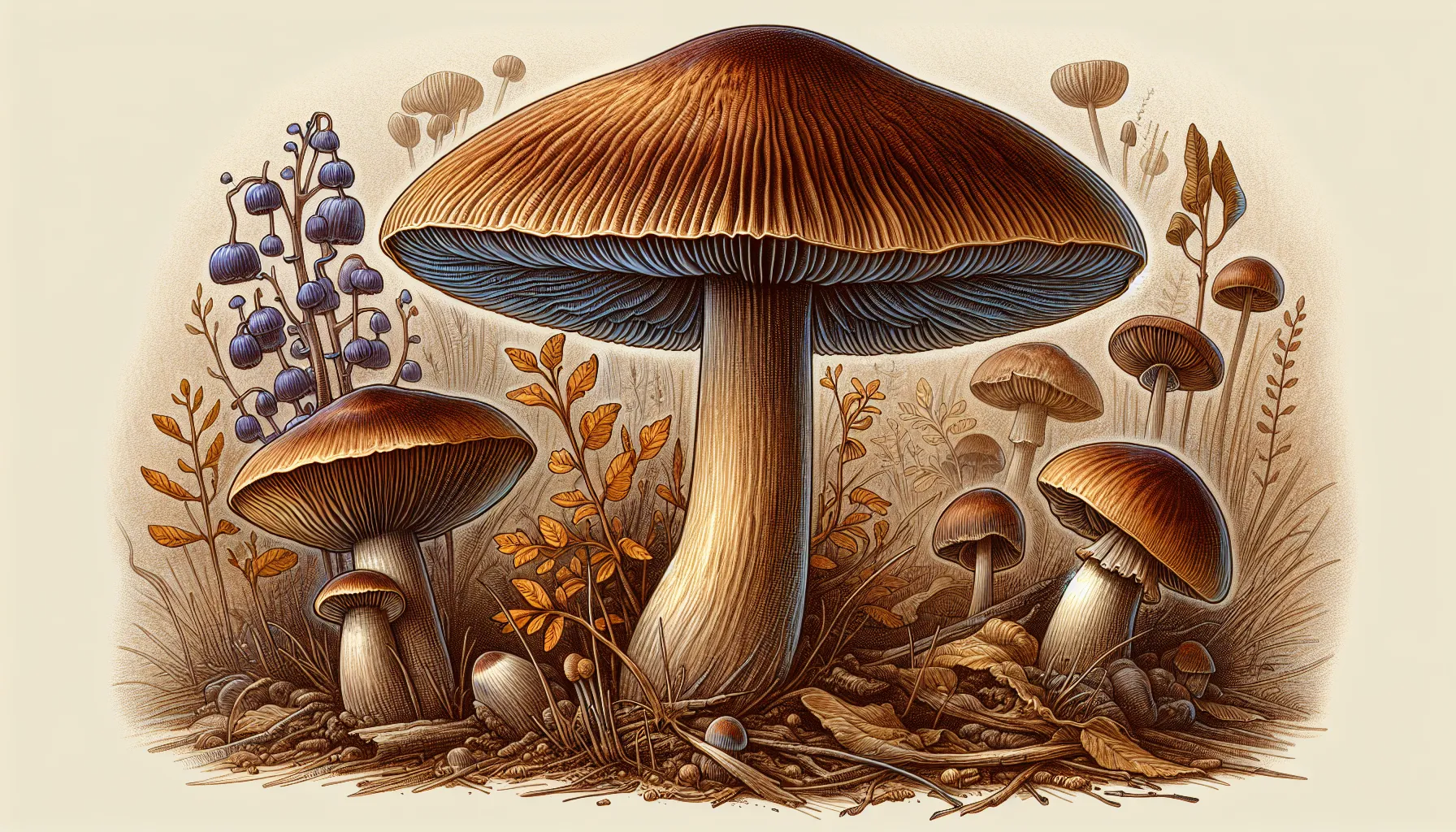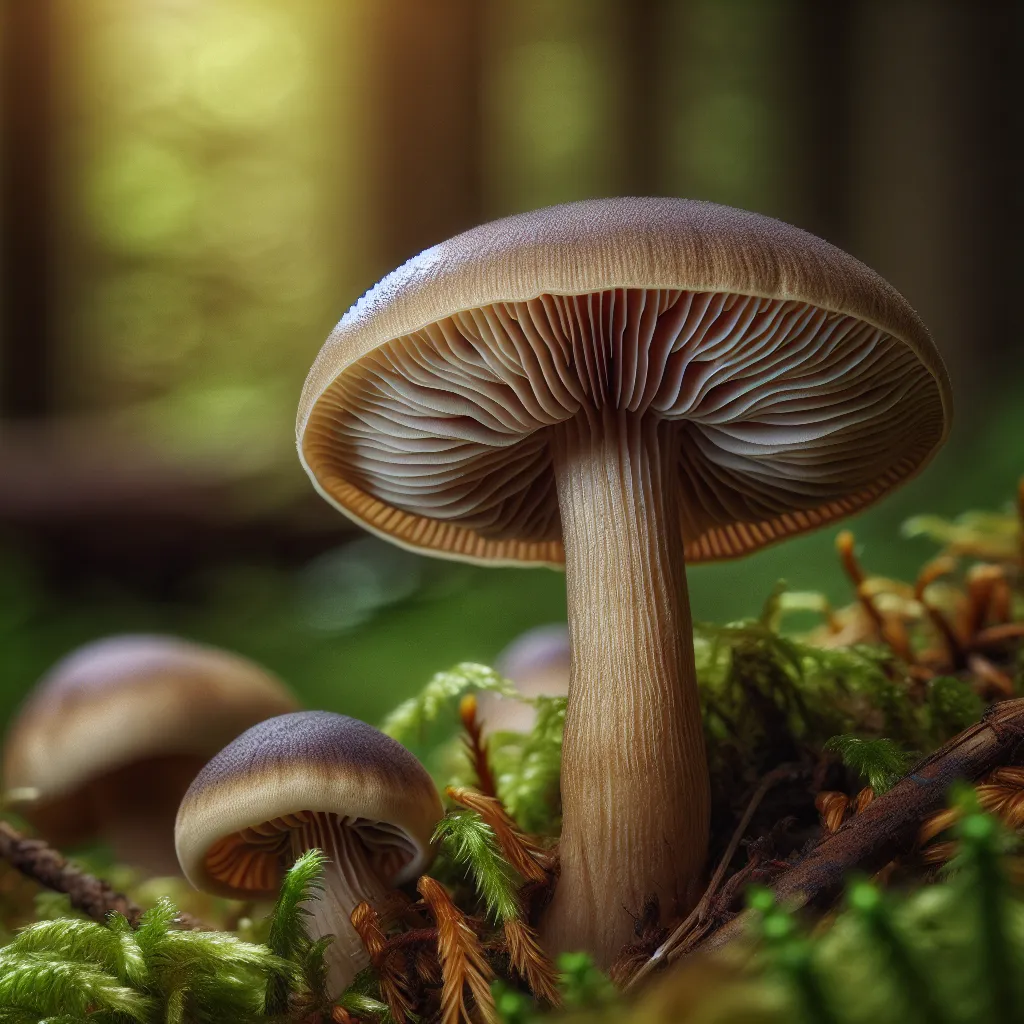Psilocybe Cyanescens, commonly known as Wavy Cap Mushrooms, have sparked curiosity and interest among mycologists, foragers, and psychedelic enthusiasts alike. This species is not only famous for its distinctive undulating cap but also for its potent psychoactive properties. In this comprehensive article, we will explore various aspects of the wavy cap mushroom, from identification and habitat to legality and cultivation.
Identification of Psilocybe Cyanescens
Identifying Psilocybe Cyanescens requires careful attention to detail, as there are several other species with similar appearances. While many people may be seeking out this mushroom specifically for its known psychedelic properties, it would be a very negative experience for the unaware consumer. The following characteristics are indicative of the wavy cap mushroom:
Caps
The cap of Psilocybe Cyanescens ranges from light to medium brown when growing, fading to a cream or yellowish hue when dried. The caps are known for their wavy margin as the mushroom matures, measuring a half-inch to 2 inches across. Notably, the caps bruise blue-green when damaged.

Gills
The gills are moderately crowded, loosely attached to the stem, and change from pale to a dark shade of purple as the mushroom ages, while the gill edges remain brown.
Stem
The stem is approximately a quarter-inch wide, extending 1.5 to 3 inches tall, with a chalk white color and a fibrous texture. A distinguishing feature is the transient ring that appears on the stem after the partial veil drops.
Spores
Psilocybe Cyanescens spores are smooth and ellipsoidal, with a dark purple or brownish deposit when observed under a microscope.
Odor
These mushrooms typically do not have a distinct odor, which can make identification by scent challenging.
Habitat
Wavy cap mushrooms thrive in lignin-rich environments, such as mulchy areas, coniferous woods, and sawdust. They are commonly found in the Pacific Northwest of North America, Northwestern Europe, and the United Kingdom.
For those interested in learning more about mushroom identification, Paul Stamets’ “Psilocybin Mushrooms of the World: An Identification Guide” is an invaluable resource, providing clear photos and descriptions (find it here).
The Legality of Psilocybe Cyanescens
The legality of Psilocybe Cyanescens is complex and varies worldwide. In many regions, psilocybin-containing mushrooms are illegal, with severe penalties for possession. However, some areas, like certain cities in California, have decriminalized them. It is imperative to stay informed about local laws regarding psilocybin mushrooms. For an up-to-date overview of psilocybin legality, visit the Third Wave’s guide to psilocybin laws.
Cultivating Psilocybe Cyanescens
Cultivation of Psilocybe Cyanescens can be challenging due to their specific environmental needs. While they are more commonly found in the wild, it is possible to cultivate them both indoors and outdoors under the right conditions. Techniques such as stem butt transplantation have been shown to yield successful crops. To learn more about growing these mushrooms, enthusiasts can explore resources like the Shroomery’s cultivation forums (see the Shroomery cultivation section).
Potency and Effects
Psilocybe Cyanescens are known for their high levels of psychedelic compounds, such as psilocybin and psilocin, making them one of the most potent magic mushrooms. The experience of consuming these mushrooms can vary greatly, with reports of both positive effects, like feelings of euphoria and profound insights, and negative effects, including intense emotions and hallucinations.
For a deeper understanding of the effects of magic mushrooms on the mind, you might find the research published by MAPS (Multidisciplinary Association for Psychedelic Studies) insightful (MAPS on psilocybin research).
Psilocybe Cyanescens Lookalikes
The dangers of misidentifying Psilocybe Cyanescens are grave due to toxic lookalikes like Galerina Marginata and Pholiotina Rugosa, which can be lethal. It’s crucial to forage with an experienced mycologist or use reliable guides to avoid mistaking these for the wavy cap mushroom.

Conclusion
Psilocybe Cyanescens hold a special place in the realm of mycology and psychedelia. Their distinctive appearance, potent effects, and the caution required in their identification and handling make them a subject of both fascination and respect. Whether you’re a seasoned forager, a curious enthusiast, or a researcher, understanding the intricacies of wavy cap mushrooms is essential for safe and informed engagement with these remarkable organisms.
For further information and resources on magic mushrooms, including identification and cultivation, consider exploring dedicated mycological websites and forums such as Mycology at Reddit or Erowid’s Vault on Psilocybin Mushrooms.
Remember, never consume any mushroom unless you are absolutely certain of its identity, as the stakes in misidentification can be fatally high. With the right knowledge and respect for local laws and the power of these mushrooms, one can safely explore the intriguing world of Psilocybe Cyanescens.
